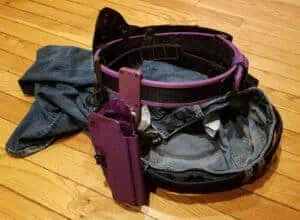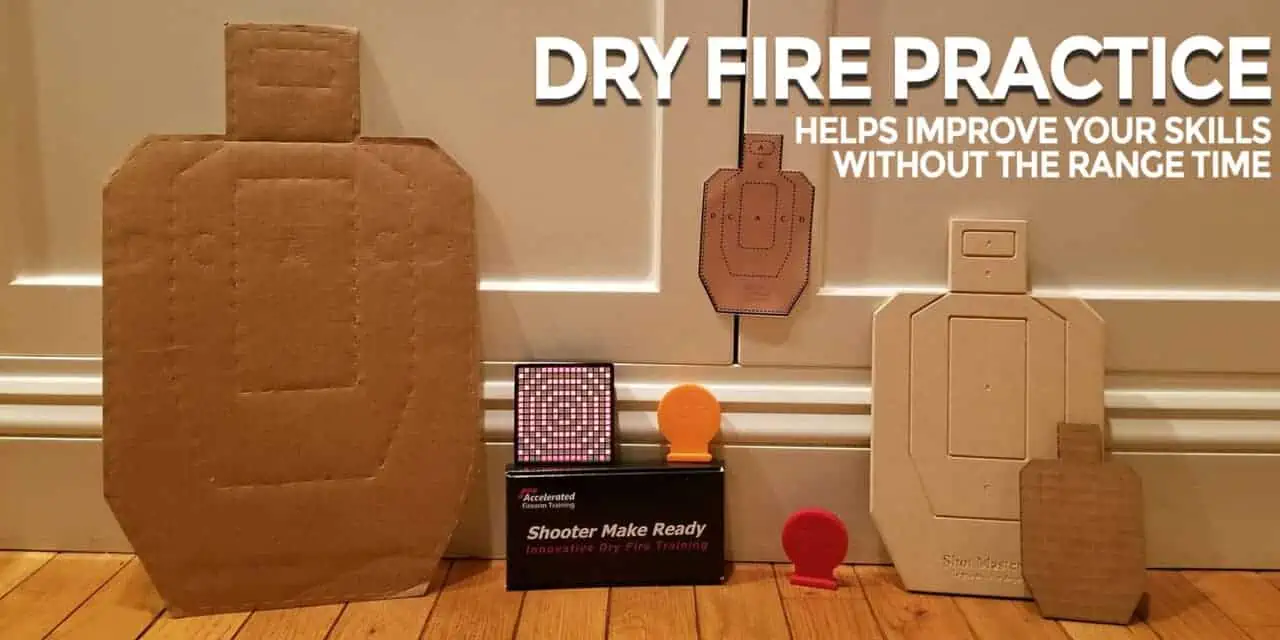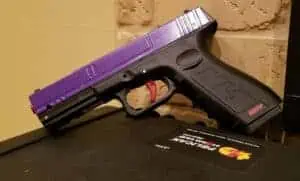Is Dry Fire Practice Right For You?
Winter is a terrible time to be a shooter, whether you’re into guns for fun, believe concealed carry is life, or fall somewhere in between. The weather stinks, the days are short, and life is a whole lot busier.
Fortunately, there’s a way to not only keep your skills sharp but also improve them over the winter: dry fire, also known as dry practice.
What Is Dryfire Practice?
Dryfire practice is away of working on your shooting without needing to, well, shoot. It’s everything about using a gun without actual live ammunition. Thus, there’s no need for ranges, backstops, or even hearing and eye protection.
I’ve written an entire (short) book about it – The Dry Fire Primer. But do you want to learn just enough to get started? Read on!
The first thing you need to do is decide what you want to learn or get better at. Very nearly everything you can think of is fair game for dry fire practice. You can work on things like:
- Drawing or reloading your gun
- Shooting at more than one target
- Moving while shooting
- Shooting with one hand
- Using a flashlight with your gun
It helps if you already know how to perform the skill safely and correctly. Consult with a good instructor if you need to, whether in class, in person, or by reaching out to the increasing number who are offering live video-based coaching over the internet.
Then it’s a matter of getting set up to do the work.
Set Yourself Up For Dry Fire Success
Step one is the same as with anything else you do with guns: making sure that you don’t shoot things you don’t want to shoot. Just because loaded guns aren’t used for dry fire doesn’t mean that you can throw the safety rules out the window. For dry fire, there are two key parts to keep in mind. You need to make sure ammunition can’t be fired out of the gun you are practicing with, and that you are keeping the muzzle oriented towards the safest direction possible in your space.
There are a number of tools and strategies to keep your gun from being able to shoot live ammunition, from simply removing all ammunition from your dry fire space, to making it physically impossible for ammunition to be loaded into the gun and fired (such as with a barrel block). You can even not use a real gun at all. Tools like plastic blue guns and laser-shooting SIRT pistols can be effectively used for many dry fire drills.
After that, as an extra layer of safety, make sure you’re always dry firing in a direction that will do the least amount of damage if a bullet magically makes its way out of your muzzle. That might be a basement wall, the side of a bookcase, your full refrigerator, or even a bucket full of sand. You need to be mindful of where a bullet might end up if you miss or if a round goes through what you’re aiming at. So, light switches, televisions, and most interior doors are usually not such a great idea.
Making Dry Fire Practice A Habit
Next, you’ll need to set aside some time to practice on a regular basis. The biggest advantage of dry fire is that you don’t have to carve out a big chunk of your day to gather up your gear and travel to and from the range. It takes only a few minutes to step out to the safe area of your home where you can get in a little dry practice. You should plan on at least 10-15 minutes, at least two or three days a week.
While it seems like more might be better, that’s not always the case. One reason is that it’s better to commit to a small amount you will actually do on a consistent basis, week in and week out. Another is that mindless repetitions aren’t as effective for learning and improving a skill as being really focused and paying full attention to your practice.
Let’s Begin
Now that you’re ready to actually dry fire, here are two ideas for drill progressions you can do:
- Perfect drawing your gun from holster by working on each individual part of the draw, from clearing your concealment garment if you wear one, to getting your primary hand on the gun and your other hand on your body, to bringing both hands together and establishing a good grip, to extending your arms out and getting a good sight picture, to pressing the trigger without the sights moving. As you get each part down, start stringing them together smoothly and quickly.
- Aim your gun at a target and keep your finger indexed high up above the trigger guard. Watch your sights closely while you walk forward, backwards, and side to side. Think about how you need to grip your gun and move your feet so that your sights stay aligned. Experiment with moving faster or slower, crossing your feet or not. You might be surprised at what works for you, especially as you continue to practice. When it gets too easy, use a smaller target or start with your gun in your holster.
No matter what drills you practice, it’s important to be mindful of exactly what you’re doing at all times. For one, you don’t want to become casual with your gun-handling habits. For another, you’ll need to pay closer attention to your gun and sights because you won’t have bullet holes to confirm your results. Perfect practice isn’t required, but you do have to know if and when you do something wrong.
Tools To Help Your Routine

Having gear for dry fire practice that is separate from your regular gear adds another layer of safety.
You can use several tools to help measure and improve your performance. While feeling more familiar and smooth with different movements is important, so are objective measures. For instance, you can use a shot timer or shot timer app to set a “par time” during which you will complete the entire drill. Start with the first beep of the timer and finish by the time the second beep starts. As you get better, you can make the par time shorter and shorter.
You can also use your cell phone to take video of yourself, both to send to a friend or instructor to double-check your work and to watch yourself to see what you’ve done well or not. And, of course, for Instagram! Make sure you get slow motion video at least occasionally, too. It will help you be really honest with yourself on whether you’re correctly performing the skills you’re practicing.
When the weather gets warm again and you have more time to get to the range to shoot live ammo, make sure you try out the things you’ve been working on all winter in dry fire. If you’ve been consistent and honest with your dry fire practice, you’ll see dramatic improvements…all without having to go outside or fire real ammunition.



